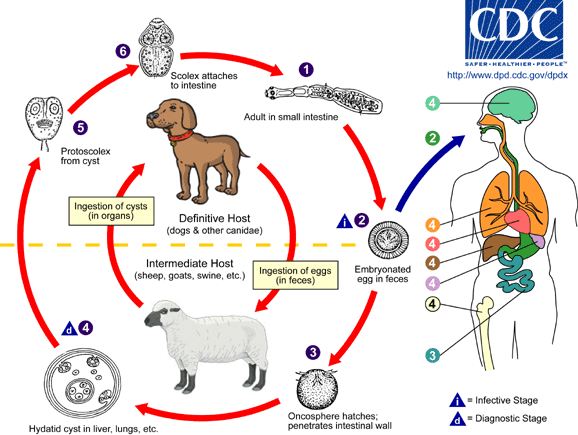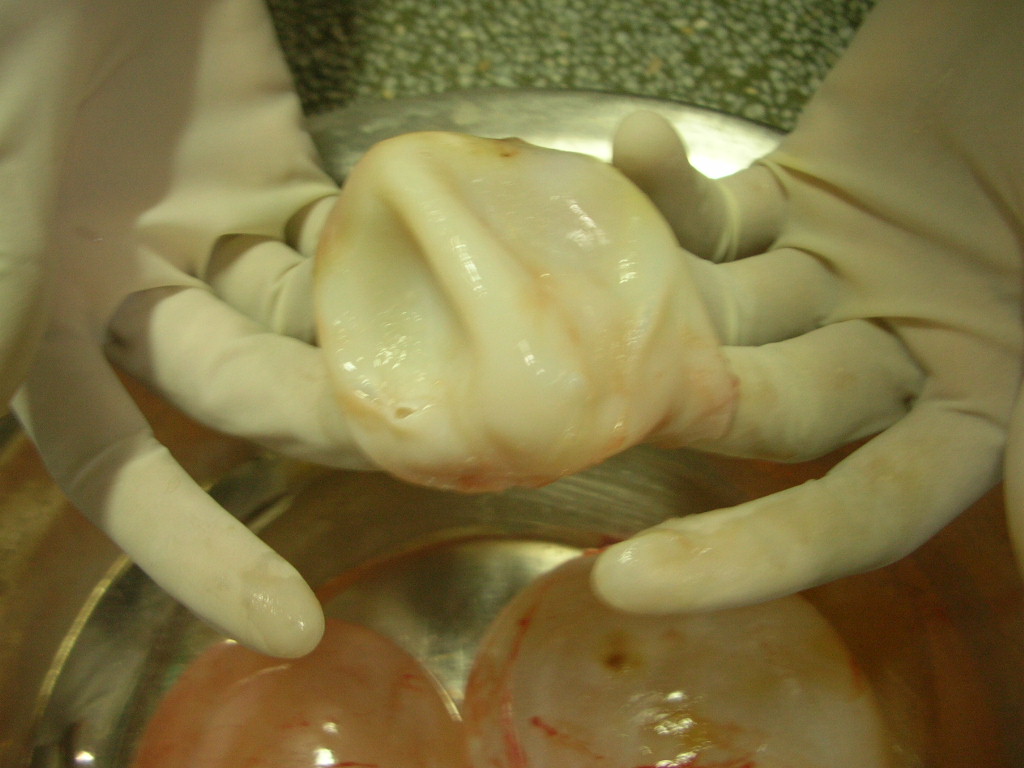Echinococcosis pathophysiology
|
Echinococcosis Microchapters |
|
Diagnosis |
|---|
|
Treatment |
|
Case Studies |
|
Echinococcosis pathophysiology On the Web |
|
American Roentgen Ray Society Images of Echinococcosis pathophysiology |
|
Risk calculators and risk factors for Echinococcosis pathophysiology |
Editor-In-Chief: C. Michael Gibson, M.S., M.D. [1] Associate Editor-In-Chief: Cafer Zorkun, M.D., Ph.D. [2]; Kalsang Dolma, M.B.B.S.[3]
Pathophysiology

(1)The adult Echinococcus granulosus (2) Eggs (3) Oncosphere (4) Cyst (5) protoscolices (6) Protoscolices evaginating and attaching to the intestinal lumen. The adult Echinococcus granulosus (3 to 6 mm long) (1) resides in the small bowel of the definitive hosts, dogs or other canids. Gravid proglottids release eggs (2) that are passed in the feces. After ingestion by a suitable intermediate host (under natural conditions: sheep, goat, swine, cattle, horses, camel), the egg hatches in the small bowel and releases an oncosphere (3) that penetrates the intestinal wall and migrates through the circulatory system into various organs, especially the liver and lungs. In these organs, the oncosphere develops into a cyst (4)that enlarges gradually, producing protoscolices (5) and daughter cysts that fill the cyst interior. The definitive host becomes infected by ingesting the cyst-containing organs of the infected intermediate host. After ingestion, the protoscolices evaginate, attach to the intestinal mucosa (6) , and develop into adult stages (1) in 32 to 80 days.
- The life cycle of E. multilocularis is similar to the life cycle of Echinococcus granulosus, but with the following differences: The definitive hosts are foxes, and to a lesser extent dogs, cats, coyotes and wolves. The intermediate host are small rodents and the larval growth (in the liver) remains indefinitely in the proliferative stage, resulting in invasion of the surrounding tissues.
- Life cycle of E. vogeli (up to 5.6 mm long), the definitive hosts are bush dogs and dogs. The intermediate hosts are rodents and the larval stage in the liver, lung develops both externally and internally, resulting in multiple vesicles.
- E. oligarthrus (up to 2.9 mm long) has a life cycle that involves wild felids as definitive hosts and rodents as intermediate hosts. Humans become infected by ingesting eggs , with resulting release of oncospheres in the intestine and the development of cysts in various organs.
Gross Pathology
Shown below is an image of a typical cyst at removal.
